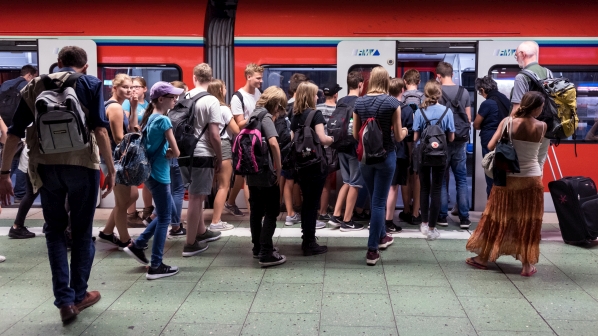MANY across Europe are now in campaign mode as election season for the European Parliament and European Commission (EC) begins. It’s not just the rail sector and community that Unife will spend this time advocating for; we also believe it is vital that Europe’s electorate receives the transport solutions it needs and deserves.
The next four months will be a tough political contest, which is essential in any thriving democracy. Even if we live in an era where loud voices threaten to overwhelm debates, we must not lose sight of the necessity of developing and delivering a multi-modal transport system for Europe, which can help to meet the broader goal of climate neutrality.
Many who use Europe’s rail networks - both national and international - want an experience worth their time and money. With many rail passengers connecting to rail services using their cars, other public transport modes, or even by bicycle, establishing consistent and reliable services is the best way to further promote and increase rail use.
Europe’s ambitious climate objectives, enshrined in policy targets to achieve climate neutrality by 2050 and the modal shift objectives of the EC’s Sustainable and Smart Mobility Strategy, mean growing passenger and rail freight use is central to the goals of the Commission. To achieve these targets, rail network capacity and traffic in and between cities, for both passenger and freight transport, will need to be scaled up.
We must avoid moving the regulatory and technical goalposts too quickly.
Delivering a more balanced transport network, while also focusing on improving the connections between different modes, will benefit all users. Unife is pushing for rail to take more of the burden so other forms of transport can be more efficient in their appropriate settings.
For example, by investing in a more reliable and attractive passenger rail network, drivers in hundreds of European cities will benefit from reduced road traffic and congestion. This is the same for the freight network, where investment in improved rail infrastructure will result in greater efficiencies and will reduce costs for all modes.
Crucially, these investments have the potential to close the ever-growing divide between urban and regional Europe. Policymakers know this is a source of some of the political discontent seen on the continent in recent times. But investment in rail can help to ease these tensions by both creating jobs and improving the quality of life by boosting links between “forgotten” regions and booming cities.
Infrastructure investment is one vital component of offering these improved connections. Building high-speed railways, metros and light rail lines, or investing in new and renovating existing bridges, tunnels and freight hubs, is essential for the continent’s transport system to progress. However, there must also be an equal focus on embracing digitalisation.
Digitalisation
In practice, this means capturing data points to build smarter networks to offer straightforward transitions between modes. It also includes focusing on speeding up the rollout of ERTMS across the European network and developing a dedicated plan to migrate from GSM-R to FRMCS, the next generation of railway telecommunications. Together these technologies developed by both European rail companies and through EC programmes will help to deliver greater interoperability to the European network as deadlines for completing the TEN-T Core network edge closer. They can also help to deliver a smarter, more integrated rail and broader transport network.
Yet to achieve these objectives, two things must be assured.
The first is the delivery of an increased EU budget for sustainable transport projects, and prioritising rail in the next Multiannual Financial Framework. Without this funding, delivery of key infrastructure and last-mile solutions for transport networks is unlikely, meaning the EC’s policy goals will remain tantalisingly out of reach.
The second is regulatory stability and predictability, which will enable European rail businesses to remain competitive. We must avoid moving the regulatory and technical goalposts too quickly, preventing companies and businesses from responding accordingly and hindering efforts to develop mobility solutions that will benefit Europe. Gradual, predictable reform is important to breed confidence and encourage investment in rail from the private sector.
Unife and other industry advocates have consistently argued for rail’s rightful place in European policy frameworks over the last five years. A great deal of work has gone into these efforts. The rail industry has in turn responded to Europe’s call to look to the future by prioritising gender equality in the workplace across the rail supply sector, while also developing strategies to source the talent to help achieve rail’s ambitious goals, notably through the Staffer programme, which will conclude later this year.
But we are entering a new phase. One that must prioritise investment to deliver better connections and ensure a competitive environment for business. By offering a situation primed for the greater take-up of rail, the industry can play a significant role in meeting the continent’s major climate pledges.

